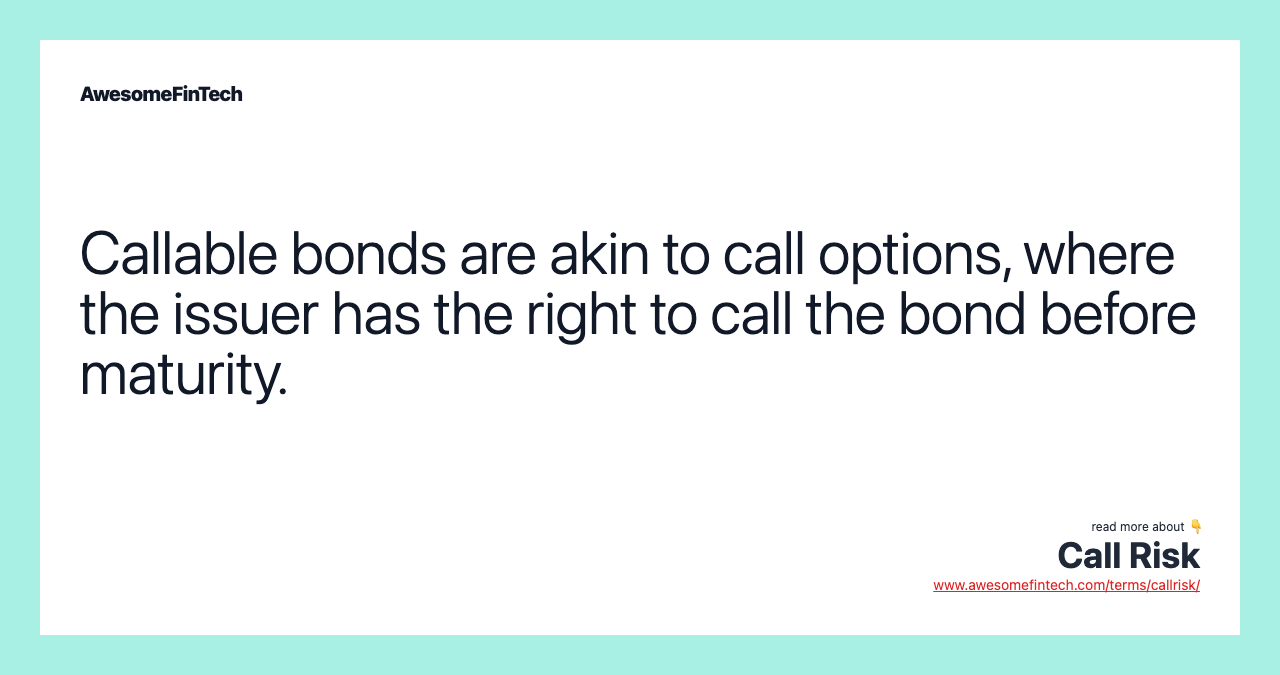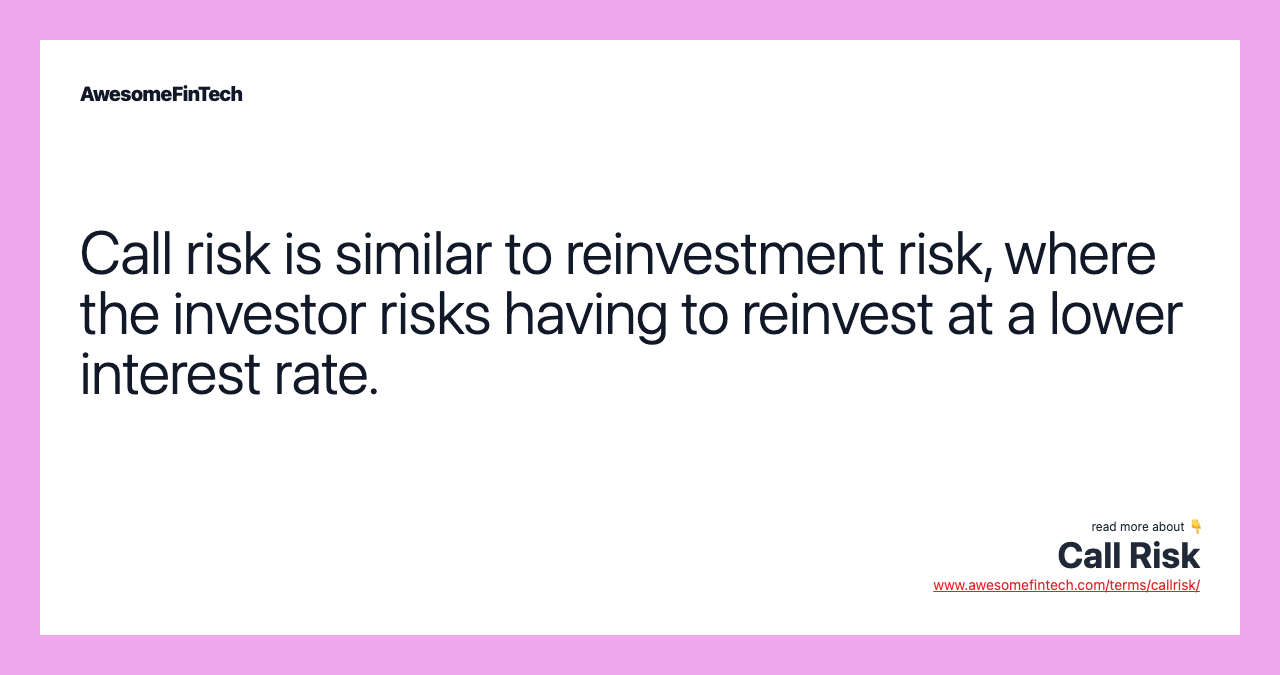Call Risk
Call risk is the risk that a bond issuer will redeem a callable bond prior to maturity. Call risk is the risk that a bond issuer will redeem a callable bond prior to maturity. When interest rates drop in the market, bond issuers seek to take advantage of the lower rates by redeeming the outstanding bonds and reissuing at a lower financing rate. Calling a bond puts bondholders at a disadvantage, where once a bond is called, interest payments stop being made on the retired bond. If interest rates have declined since the bonds were first issued, issuers will call the bond once it becomes callable and will create a new issue at a lower rate.

What Is Call Risk?
Call risk is the risk that a bond issuer will redeem a callable bond prior to maturity. This means the bondholder will receive payment on the value of the bond and, in most cases, will be reinvesting in a less favorable environment — one with a lower interest rate.



Understanding Call Risk
A callable bond is one that can be redeemed prior to its maturity date. The bond has an embedded option that is similar to a call option, giving the issuer the right to call the bond before it matures. When interest rates drop in the market, bond issuers seek to take advantage of the lower rates by redeeming the outstanding bonds and reissuing at a lower financing rate.
Call protection clauses help protect investors from call risk by preventing an issuer from calling the bond over a set period of time.
Special Considerations
Calling a bond puts bondholders at a disadvantage, where once a bond is called, interest payments stop being made on the retired bond. To protect investors from having their bonds redeemed too early, trust indentures, which are created at the time of issuance, include a call protection clause.
The call protection is the period of time during which a bond cannot be redeemed. After the call protection expires, the date on which the issuer can call the bonds is referred to as the first call date. Subsequent call dates are also highlighted in the trust indenture. The issuer may or may not redeem the bonds, depending on the interest rate environment. The likelihood of the bond being retired on any of the call dates presents a call risk to the bondholders.
Example of Call Risk
A callable bond is issued with a coupon rate of 5% and has a maturity of 10 years. The call protection period is four years, which means the issuer cannot call the bonds for the first four years of the bond’s life regardless of how interest rates change. After the call protection period ends, bondholders are exposed to the risk that the bonds may be paid off if interest rates drop below 5%.
If interest rates have declined since the bonds were first issued, issuers will call the bond once it becomes callable and will create a new issue at a lower rate. It may be difficult, if not impossible, for bond investors to find other investments with returns as high as the refunded bonds. Investors will, therefore, lose out on the high rate of their bonds and will have to invest in a lower rate environment. This reinvestment at a lower interest rate is referred to as reinvestment risk. Therefore, investors exposed to call risk are also exposed to reinvestment risk.
Related terms:
Callable Security
A callable security is a security with an embedded call provision that allows the issuer to repurchase or redeem the security by a specified date. read more
Callable Bond
A callable bond is a bond that can be redeemed (called in) by the issuer prior to its maturity. read more
Call Date
The call date is when an issuer of a callable security may exercise that option to redeem. read more
Call Option
A call option is a contract that gives the option buyer the right to buy an underlying asset at a specified price within a specific time period. read more
Call Protection
Call protection is a provision in a bond that prohibits the issuer from buying it back during a set period early in its life. read more
Conditional Call Option
A conditional call option requires an issuer that calls a bond before maturity to replace it with a non-callable bond of similar value. read more
Coupon Rate
A coupon rate is the yield paid by a fixed income security, which is the annual coupon payments divided by the bond's face or par value. read more
Embedded Option
An embedded option is a component of a financial security that gives the issuer or the holder the right to take a specified action in the future. read more
Fixed Income & Examples
Fixed income refers to assets and securities that bear fixed cash flows for investors, such as fixed rate interest or dividends. read more